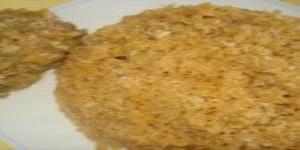
Scope
Six types of tastes are described in the Bhaga Shastra – salt, sweet, sour, hot, bitter and pungent. It states that every meal should include all these tastes, so that the appetite is satisfied and the tongue is neutralized by all the tastes being together. As per the instructions in Bhaga Shastra, in order for all parts of the body, mind and brain to function properly, a balanced diet of all these tastes is a must.
Further, the purpose of having all six tastes is to balance the tridoshas in the body, namely vaata (acidic), pitta (alkaline) and kapha (phlegm). Every ingredient used in Hindu cooking is classified as per their dosha properties. For e.g. too much of vata foods such as flat beans, corn, jackfruit, Bengal grams, will lead to belching, itchiness or prickliness on the skin. Excess of pitta foods results in giddiness, acidity and imbalance in the brain and mood disorders. Excess kapha food leads to chills and cold.
Bhaga Shastra further classifies foods into rajasik, tamasik and sattvik types. Rajasik food makes one feel agitated, aggressive, lustful and egoistic. Tamasik food makes a person lazy, sleepy and depressed. Satvik food gives clarity to the person and brings him peace of mind leading to bhakti (devotion), tripti (fulfillment) and ananda (bliss). It is therefore not surprising that the Bhagashastra has a huge variety of sweet dishes made from rice, broken wheat, flattened rice, millets, maize, lentils (both split and whole). Many of these sweets are made during festive occasions – with certain sweets made specifically on a particular festival. For e.g. pongal in the Tamil New Year festival of Thai Pongal, kolukattai or modak for Ganesh Chaturthi, saffron sweet rice for Basant Panchami in Punjab, sandesh for Durga Puja in Bengal, karah prasad in celebrating festival of Sikh Gurus, kheer and laddoo in almost all Hindu festivals, payasam in South Indian festivals, especially Onam, and the list just goes on. In fact, India has the largest variety of sweet dishes in the world.
Ingredient and Process of Cooking
Depending on the sweet, the ingredients and the time required to make them vary vastly. However, some standard ingredients are integral to Bhagashastra sweet dishes – they include a wide variety of rice or wheat, clarified butter or ghee, unprocessed sugar such as jaggery or palm sugar, milk, cardamom for flavor and coconut.
Ingredients:
Rice – 1 padi
Pure Water – 2 ½ padi
Fried Yellow Or Green Gram – veesam 1/16 padi
Chana Dal/Bengal Gram – veesam ½ padi
Grated Coconut – 5 palam
Jaggery – ½ veesam
Cashew Nuts – 5 palam
Cardamom Powder – ½ r.e
Ghee – 1/8 padi
Method:
1. Clean the rice, fry it in a pan little by little until it is golden brown and make flour out of it. Boil pure water in a pot. Fry the whole moong dal and then split it to use it.
2. Add the fried moong dal and Bengal Gram to the boiling water. When it is half boiled, add grated coconut and jaggery to it. When the jaggery is dissolved, add the rice flour to it. Stir and close the lid.
3. After some time add cashew nuts, cardamom powder and ghee. Add it one by one to the kali. Keep it on slow fire for sometime and remove from fire.
4. You can soak the rice, grind it and then fry the ground flour to make this dish. If you want the kali to be dry, the water used to cook this should be less.
5. If you need the dish to be like a solid mass, the water has to be more.
References
Hindu Bhaga Sasthiram: Click Here
Hindu Compliance Body
The Hindu compliance body was established under the executive order of The Supreme Pontiff of Hinduism, dated August 14, 2020, order number 10010, under the title Reviving the Hindu Compliance System and Body
to create, promote, spread and teach the standard procedures for all products and services that are in compliance Hindu Shastras.
Copyright
HCS has the copyright of all its publications. No part of these publications may be reproduced in any form without the prior permission in writing to HCS. This does not preclude the free use, in the course of implementing standard, of necessary details mentioned above. Enquiries related to copyrights to be addressed to KAILASA.
